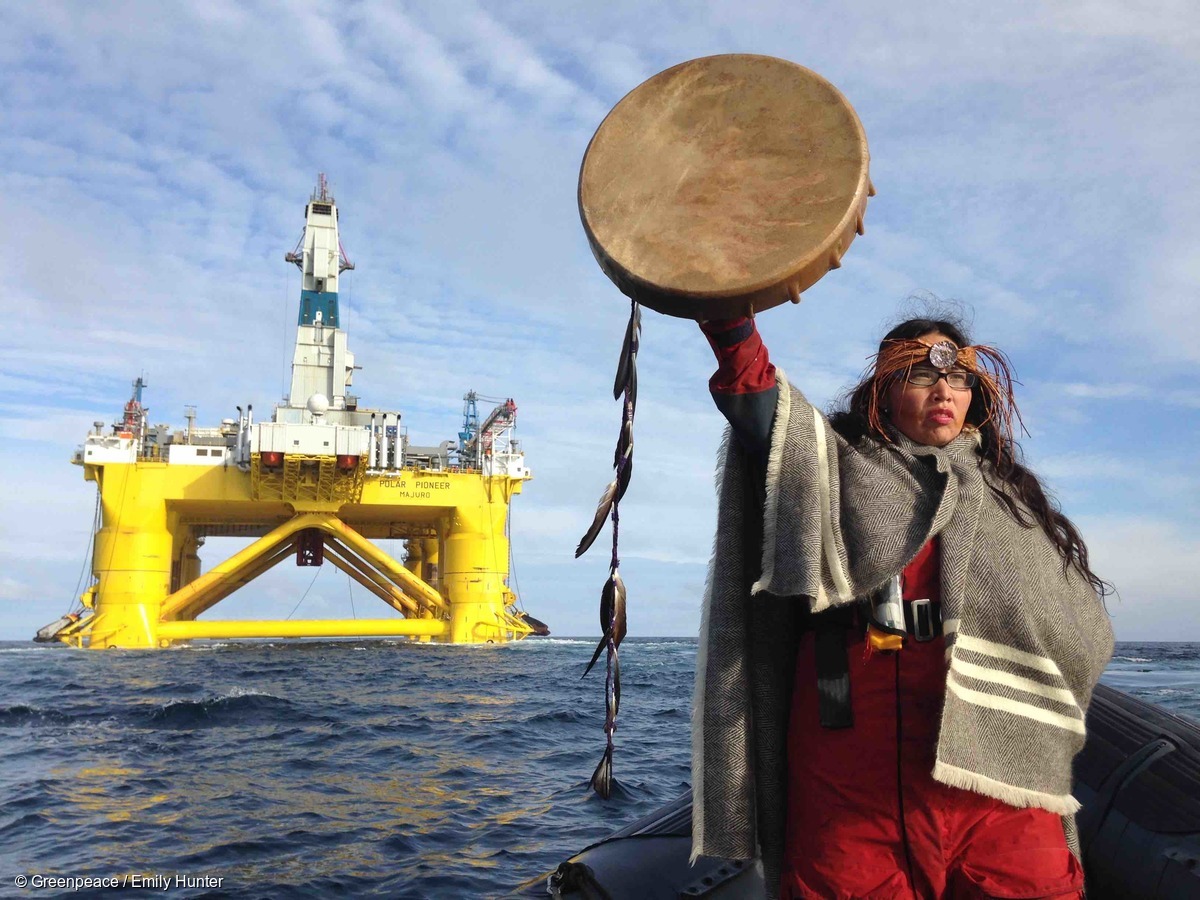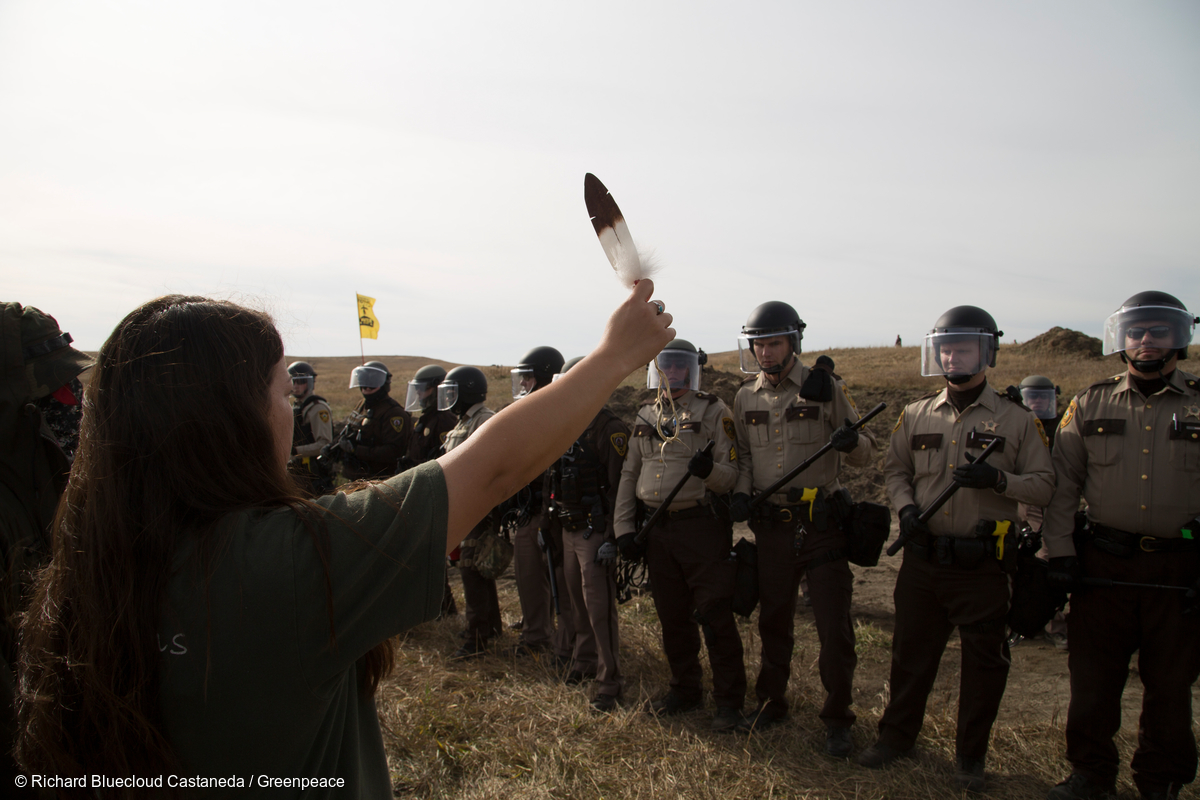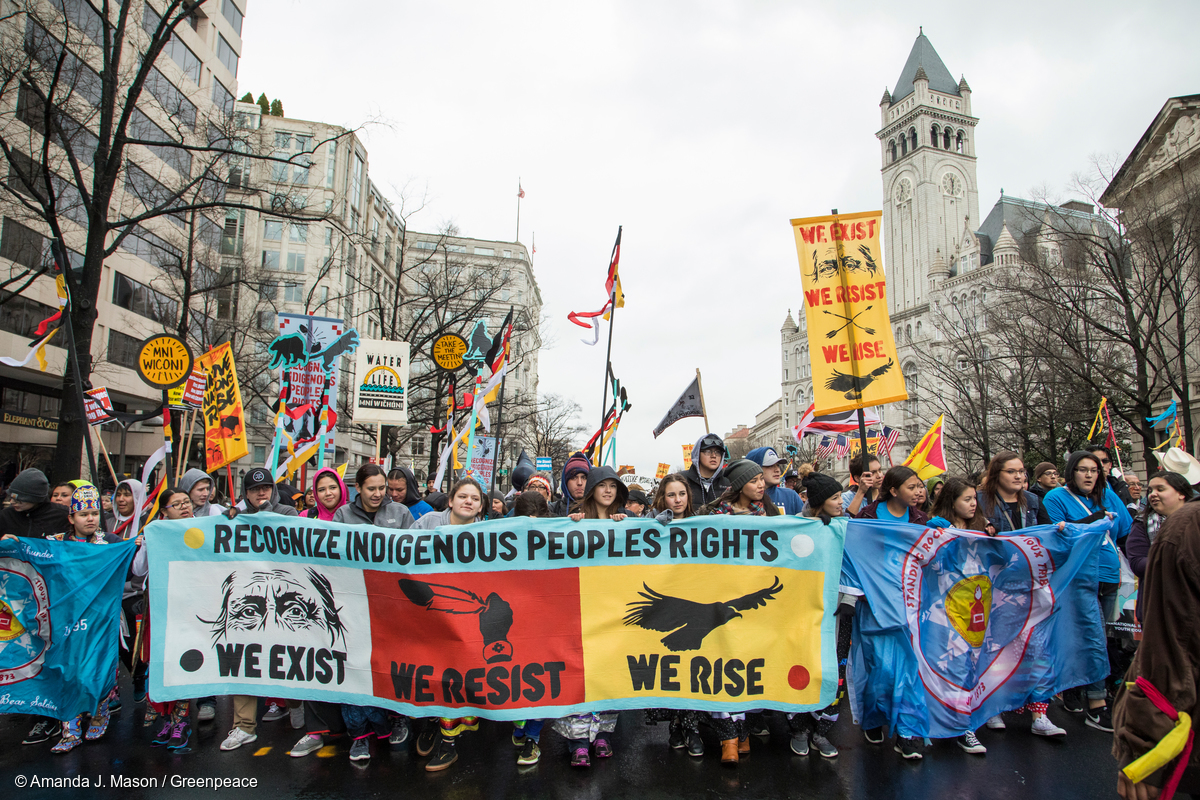The fight for Indigenous rights, not only here in the U.S. but around the world, is more important than ever. As we approach a pivotal moment in the need for climate action, the larger environmental movement must ally with Indigenous people.

When I ask people about the roots of the environmentalist movement and the pioneers of this field, I get many answers like: Rachel Carson, John Muir, and Aldo Leopold. But the first environmentalists are often overlooked. In truth, they are Indigenous people. Although, the word “environmentalist” doesn’t quite do justice to all that Indigenous beliefs, culture, and practices encompass when it comes to the natural world. For our people, protecting the environment surpasses the issue of preserving lands, livelihoods, wildlife, and water. There is a spiritual and religious component unique to Indigenous environmentalism since many of our ancestral and traditional practices are tied to the natural world.
Since nature is at the intersection of most Indigenous peoples’ identity religion, culture, and community, we are therefore compelled to protect it. Our people have lived here on Turtle Island (also known as North America) since time immemorial, and for just as long we have acted as good stewards of the earth, the life, and the resources it gives us. Our ancestors lived in harmony with the land and with what it provides, while staying mindful of the ecological boundaries of the natural world and not taking from the land more than they needed. We see ourselves as being interconnected with all life forms. This awareness and reverence of where we fit into the world guides us. Mother earth does not have a human voice, therefore we have the ability to use our voices to call to her needs when she gives us warning and needs our help.
Long before modern technology and science, Indigenous people created complex systems to thrive off the land while caring for and maintaining it in turn. When European colonizers came to present day America, they marveled at the seemingly untouched fertile landscape of possibility. But in truth, this landscape was a result of thousands of years of land management by Indigenous people. Our ancestors used frequent, low intensity controlled burns to maintain a productive ecosystem and prevent wildfires long before our land was colonized. They employed regenerative harvesting (such as coppicing) and selective domestication in their methods of cultivating agriculture. Increasingly we are seeing countries around the world turning to their Indigenous people, seeking their knowledge on natural resource management to heal stolen and lands.
Colonialism violently uprooted Indigenous communities and drastically changed the natural environments and resources of our ancestral lands. As a result, environmental racism has manifested in a myriad of ways. In the 1800s, the U.S. government ordered the mass killing of buffalo in an effort destroy the livelihood of the Plains tribes. In recent decades, the ancestral lands of the Western Shoshone have been the location of over 1,000 atomic explosions and they continue to fight to keep their sacred Yucca Mountain from becoming a disposal site for nuclear waste. And the nation watched as the Standing Rock Sioux (surrounded by indigenous brothers and sisters from around the nation and as far as New Zealand) spoke out and protested against the Dakota Access Pipeline in order to defend the Missouri River , which is the primary water source for thousands of people in North Dakota on and off the reservation.

A phalanx of National Guard and police advance toward a water protector holding an eagle feather at a camp near the Standing Rock Reservation in the direct path of the Dakota Access pipeline (DAPL) where 117 people were arrested.
For the Indigenous people of the U.S., environmental destruction brings not only sorrow for the ruin of our mother the earth, but also amplified negative effects on the health of our people, our brothers and sisters across the nation. The largest radioactive accident in North America occurred not at Three Mile Island but on Diné (Navajo) lands in 1978, and even now Diné teenagers have a cancer rate that is 17 times the national average. The Akwesasne Mohawk people have levels of polychlorinated biphenyls (PCBs) in their bodies twice as the national average due to the dumping of these legacy pollutants in Kaniatarowanenneh, the river that sustains them with fish. And mining has left over 160,000 abandoned mines in the western U.S., where the majority of present day “Native American lands” are located. Indigenous people living near abandoned uranium mines have an increased likelihood for multiple chronic illnesses due to their proximity to contaminated soil and water, which has a small chance of ever being cleaned and remedied.
This is just a droplet in a vast sea of environmental injustices that have been and continue to be committed against our first nations.
Indigenous communities are one of the groups most impacted by climate change and the human activities that have precipitated it. Worldwide, Indigenous people comprise 5% of the world’s population, yet their lands encompass 22% of its surface and are home to 80% of the planet’s biodiversity. The challenges they face for sovereignty over their ancestral lands carry so much weight when we look further into the chain of impacts it has on their communities and the natural world.

The marchers head down Pennsylvania Avenue with the Trump Hotel in the background carrying a banner declaring, “We Exist. We Resist. We Rise.” Native Nations March. Native nations gather this week to stand up for indigenous rights. Thousands march from the Army Corps of Engineers to Lafayette Park, in front of the White House, where a rally is held.
But we are not complacent, we are not hopeless, and we are not giving up. Indigenous people are a necessary part of the solution, and many people beyond our spheres recognize the need for the inclusion of our nations.
According to the newest Intergovernmental Panel on Climate Change (IPCC) report, there is “high agreement that Indigenous knowledge is critical for adaptation.” Indigenous people have a wealth of knowledge to be tapped into, including methods of managing forests and agro-ecological systems, as well as their traditions of stewardship passed down through the generations. The reverence we are taught for the natural world from birth is worthy of sharing to cultivate the next generation of environmental stewards throughout all cultures.
The fight for Indigenous rights, not only here in the U.S. but around the world in countries like Australia, Canada, and Brazil, is more important than ever. As we approach a pivotal moment in the need for climate action, the larger environmental movement must ally with the Indigenous people.
The rallying cry against the DAPL at Standing Rock has brought us into a new era of Indigenous environmentalism, as more and more people recognize and acknowledge the fight we have been fighting for centuries against ever-evolving forms of oppression. The national attention that Standing Rock received brought so many allies to Indigenous activism beyond North Dakota. And our movement continues to grow.
